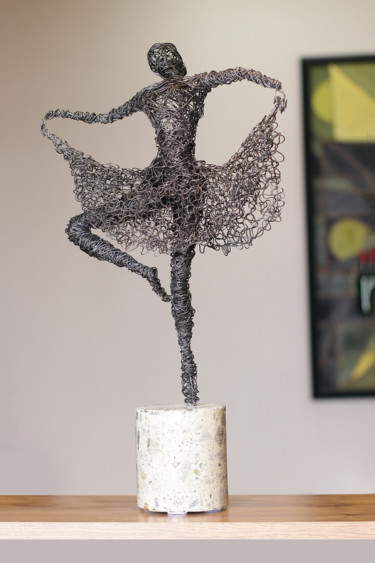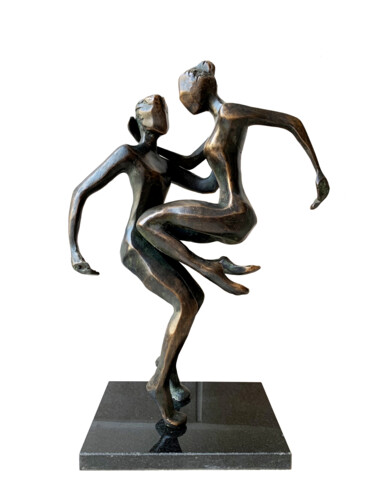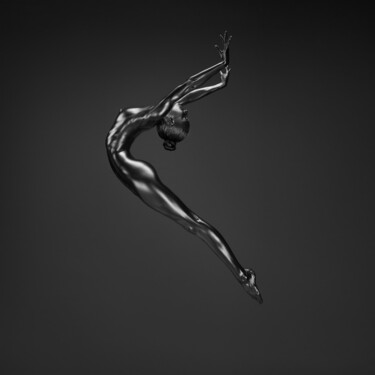The art of dancing
Dance is an intense, passionate, sublime and charismatic form of art, through which the human body expresses, following a pre-established plan or through improvisation, the most hermetic and hidden sensations of the soul. Since ancient times, dance, often accompanied by music or sound compositions, has been a fundamental part of rituals, which have represented unforgettable moments of collective aggregation, such as ceremonies and folk festivals. In fact, this discipline has been very likely present in all human cultures, so much so that, among the first works of art that depict it, we find the paintings of ancient Egypt, ancient Greece, the Etruscans and the Romans. Moreover, this topical has been investigated by art also during the Middle Ages, the Renaissance, the seventeenth-century Classicism, the Neoclassicism, the Impressionism and the painting of the 900'.
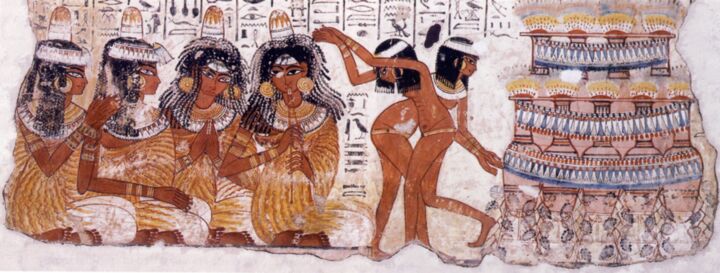 Egyptian wall painting from the Tomb of Nebamon with player and dancers, 1370 BC. London: British Museum.
Egyptian wall painting from the Tomb of Nebamon with player and dancers, 1370 BC. London: British Museum.
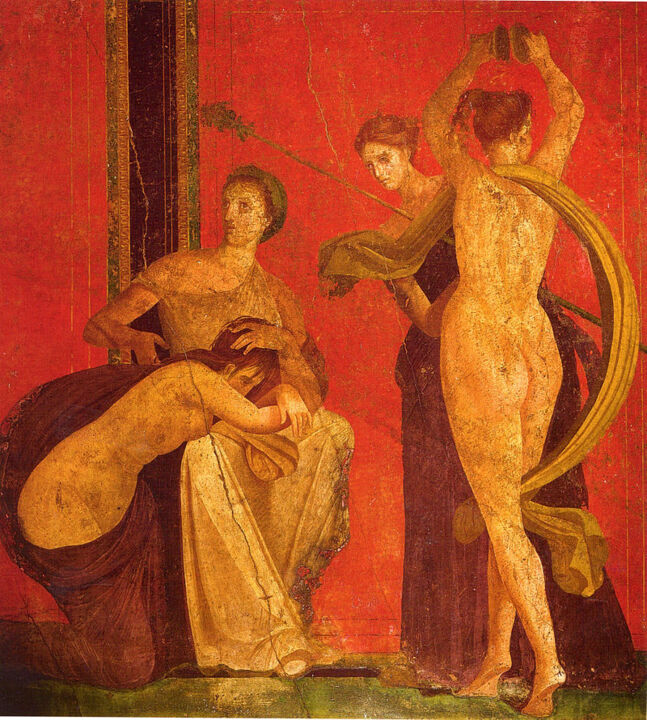 Woman playing cymbals, first century B.C. Fresco, Pompeii: Villa of the Mysteries.
Woman playing cymbals, first century B.C. Fresco, Pompeii: Villa of the Mysteries.
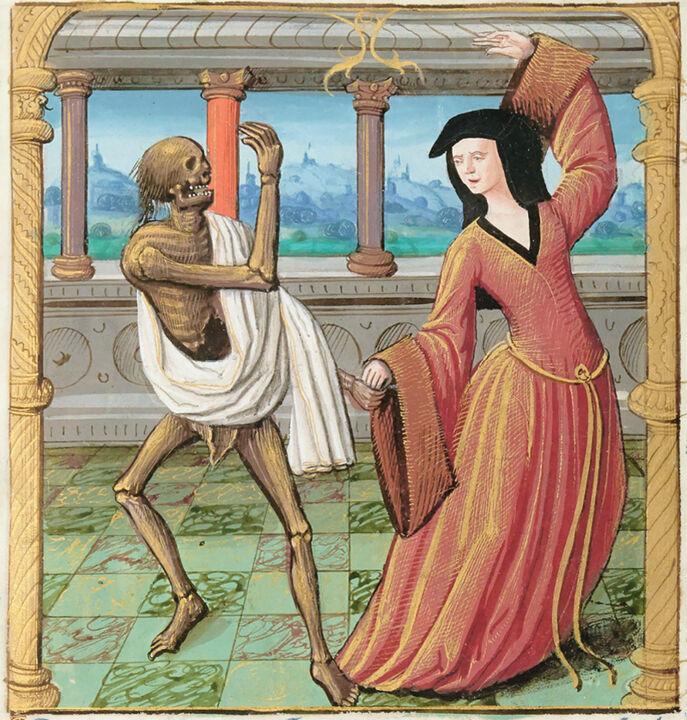 Dance Macabre, fifteenth century. Illuminated codex. Paris: BnF © Bibliothèque nationale de France
Dance Macabre, fifteenth century. Illuminated codex. Paris: BnF © Bibliothèque nationale de France 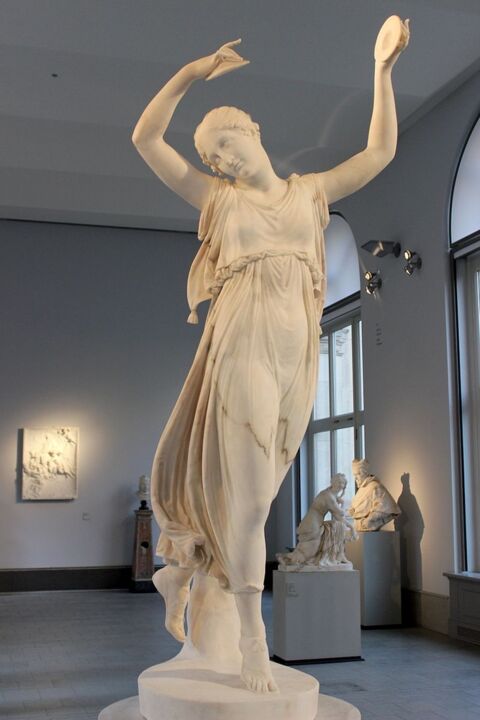 Antonio Canova, Dancer with cymbals, 1809-14. Marble 187 cm (height). Berlin: Bode-Museum.
Antonio Canova, Dancer with cymbals, 1809-14. Marble 187 cm (height). Berlin: Bode-Museum.
Antonio Canova: Dancer with Harpsichords
As far as Neoclassicism is concerned, an excellent example of sculpture with dance as its subject is Dancer with cymbals by Antonio Canova. In this regard, it is important to underline how, in the artistic production of the Italian master, such theme has been dealt with on many occasions. In fact, Canova depicted dance through goddesses, muses, mythological figures, reliefs, drawings and tempera paintings, in order to immortalize it in as many poses and movements as possible. However, the sculptures, created by the Italian master, represent the most challenging research regarding suchtopic, since they were able to immortalize the plasticism of the human figure in action. The Dancer with cymbals, part of a triptych of sculptures on the same theme, depicts a young girl who, caught while performing a dance step, delicately grasps harpsichords with her hands. The body of the latter, standing on the tip of one foot, is intent on stretching vertically, just as if she wanted to follow the sound produced by the musical instruments. Finally, the head of the girl, turned downwards, seems to want to catch the sound vibrations, while her body, covered by a thin and refined dress, is visible in its sinuous forms.
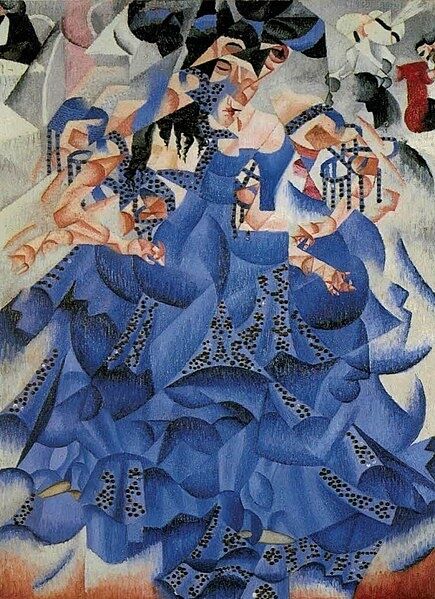 Gino Severini, Dancer in Blue, 1912. Oil on canvas, 61 x 46 cm. Venice: Peggy Guggenheim Collection.
Gino Severini, Dancer in Blue, 1912. Oil on canvas, 61 x 46 cm. Venice: Peggy Guggenheim Collection.
Gino Severini: Dancer in Blue
The theme of dance was also dear to Gino Severini, who, attracted by the world of Parisian cafes, portrayed it in two famous paintings, such as Dancer in Blue and Dancer in White, both made in 1912. Speaking of Dancer in Blue, this artwork, which represents the pure expression of the dynamism of dance, was born from the union of the study of the human figure in motion with the reflections of light, which are found in the painting thanks to the presence of some sequins. These latter luminous elements were inserted into the work through the technique of collage, born in that same period thanks to the artistic investigation of Pablo Picasso and Georges Braque. Returning to dynamism, this is also conferred on the painting through the fragmentary execution of the dancer, who is clearly distinguished only in certain parts of her face and hands. In this context, the angular planes, which shatter the form by dispersing it in space, are dominated by a wide range of gradations of the color blue, aimed at giving relief and dynamism to the forms. Finally, the dancer, who, like her author, is halfway between Cubism and Futurism, assumes a conical form, which allows her to acquire a kind of whirling motion.
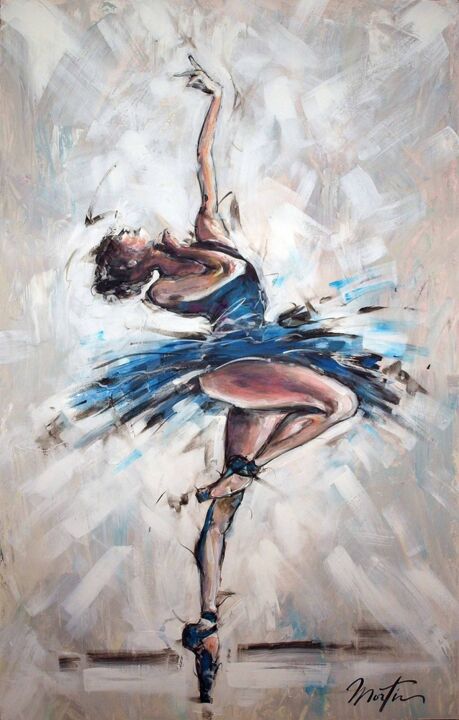 Martin-Freville, Opéra, 2016. Acrylic on canvas, 116 x 73 cm.
Martin-Freville, Opéra, 2016. Acrylic on canvas, 116 x 73 cm.
Martin-Freville: Opera
Dance is also the protagonist of many works created by the artists of Artmajeur, such as, for example, the canvas of Martin-Freville, where, on a background marked by simple brush strokes, stands out the figure of a dancer, who, in stage clothes, is intent on performing a complex classical step. The classical dancers were the favorite subject of a very famous artist, such as Edgar Degas, who created many works depicting this subject, among which, one of the most famous is certainly The School of Dance. In the latter painting, which documents the rehearsals behind the scenes of a theater, the dancers, in tutus and slippers, are caught in the moment in which, under the watchful eye of the old teacher, they interpret different positions. The environment, within which the scene is set, is dominated by a neutral background color, tending to ocher, which identifies the stage, while the walls are colored light green. It is precisely on these chromatic nuances that the white tutus of the dancers stand out forcefully in the central part of the work, immediately attracting the viewer's attention. Finally, the framing of the painting, immediate, instantaneous and almost reportage-like, has certainly been inspired by photography, which was gaining ground at the time of Degas. Therefore, Martin-Freville's painting, which has the dancer's body as its sole center of interest, represents a simplified version of the French masterpiece, in which dance is given greater value, in its quality of passionate art, aimed at the expression of the most hermetic and hidden sensations of the soul.
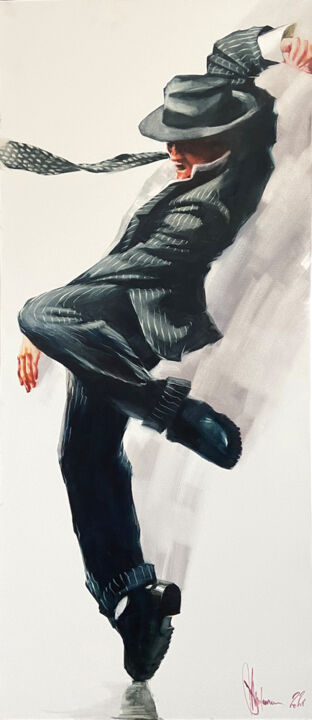 Shulman, Street dancer, 2021. Oil on canvas, 120 x 50 cm.
Shulman, Street dancer, 2021. Oil on canvas, 120 x 50 cm.
Shulman: Street dancer
The painting by Shulman, an artist from Artmajeur, depicts a man in elegant clothes, who, within a white background, in which only his shadow and the reflections of his movements are present, is intent on dancing in a wild manner. The passionate movements of the protagonist of this work remind us of those of Louise Weber, known as "La Golosa", and of Edme Etienne Renaudin, known by the stage name of "Valentin le Désossé", protagonists of the masterpiece by Toulouse-Lautrec, entitled Dance at Moulin Rouge. The work of the French master, however, unlike that of Shulman, is not limited only to immortalize the dance of the two protagonists, since it also depicts the background of the famous Parisian club, the Moulin Rouge, and many other characters, who are intent on moving and chatting. It should be noted that, among these figures, is painted even that of the famous dancer Jane Avril, who, intent to dance vigorously, was the protagonist of other works of Toulouse-Lautrec. Moreover, this painting is also denoted by the presence of the artist's father, who was portrayed in the background with a thick white beard. Thus, the highly original work of the artist from Artmajeur, which is devoid of the depiction of the background and other characters, manages to break away from the figurative tradition expressed by the greatest masters in the history of art, enhancing, in an innovative way, only the wild dance of its only protagonist.
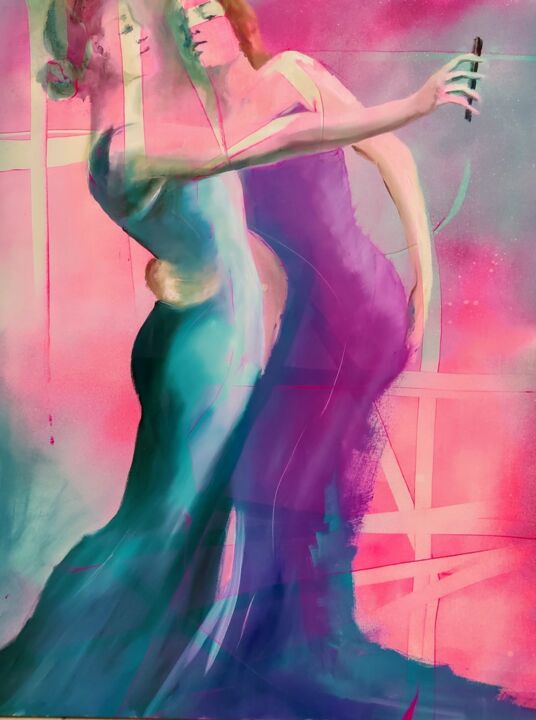 Alexandra Van Lierde, Dancing selfie, 2021. Oil on canvas, 100 x 80 cm.
Alexandra Van Lierde, Dancing selfie, 2021. Oil on canvas, 100 x 80 cm.
Alexandra Van Lierde: Dancing selfie
The works of art, having as their subject dancing figures, have often immortalized the customs and traditions of the time in which they were conceived, such as, for example, the painting Dancing at the Moulin de la Galette by Auguste Renoir, which depicts a moment of daily life in Paris at the end of the nineteenth century. This canvas, in which we find characters dancing or conversing at a table, is characterized by small strokes of saturated colors, aimed at reproducing the effect of the sun, which filters through the branches of the trees. In addition, further luminescent effects were achieved by Renoir through the juxtaposition of contrasting colors, such as, for example, the dark of the men's clothing, which was painted next to the light of those of the women. In addition, the work is marked by a strong depth, given to it by the superimposition of the heads of the characters and a photographic-type framing, in which the event is immortalized in the same way as it appeared to the eyes of the French master. The painting by Artmajeur's artist, Alexandra Van Lierde, like Renoir's, has succeeded, through the use of dancing characters, in immortalizing an era, namely the contemporary one. In fact, in this canvas, where only two girls were painted, within an undefined space, is expressed, through the depiction of a selfie, the essence of a society marked by the use of new technologies and social media. Therefore, the intimate atmosphere of Van Lierde's work, could also be read as a criticism of a world, in which people tend to isolate themselves behind a screen.

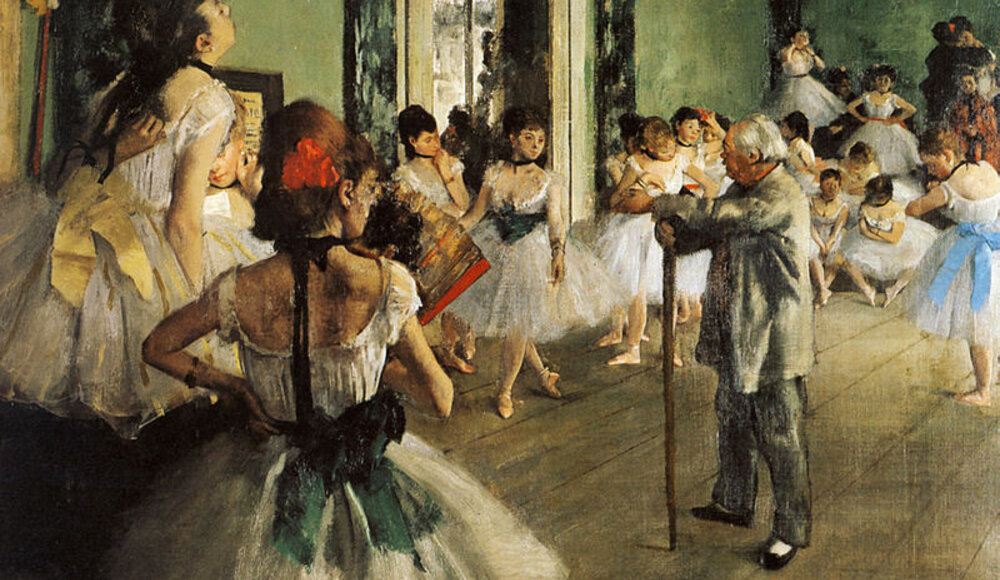
 Olimpia Gaia Martinelli
Olimpia Gaia Martinelli


